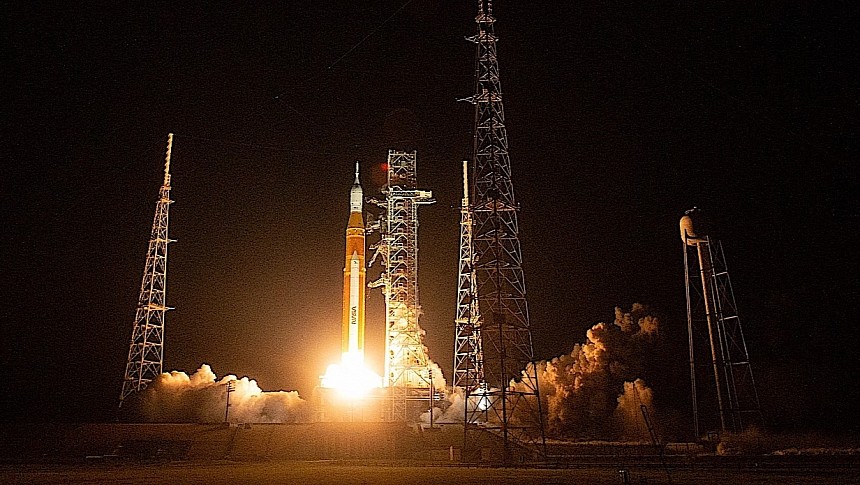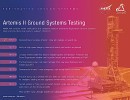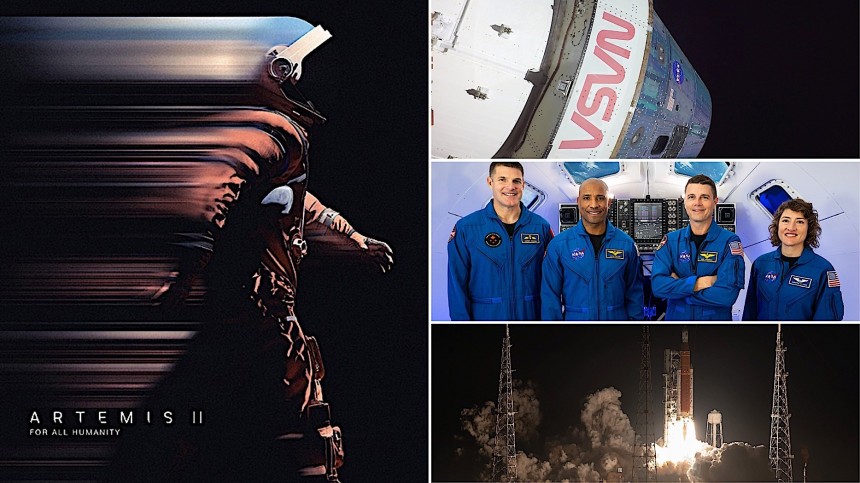Earlier this week we got word of the four astronauts NASA will send on a trip around the Moon having completed the first in a series of tests meant to certify the readiness of humans and gear for a glorious return to proper space exploration. With that, we also got a glimpse of the upcoming test procedures for the mission. Here they all are.
Artemis II is the first crewed mission to the Moon under the new exploration effort. It is scheduled to depart in November 2024, using the Space Launch System rocket and the Orion capsule as means of transport.
Four astronauts will be on board: mission commander Reid Wiseman, pilot Victor Glover (the first person of color to make a trip so far out into space), mission specialist Christina Hammock Koch (the first female to be sent to the Moon), and mission specialist Jeremy Hansen.
The crew has been involved in intensive training for the mission for a while now, but this week they made the first proper trip to the Launch Pad 39B at the Kennedy Space Center to practice "the procedures they will undergo on launch day to prepare for their ride to space."
That meant they had to wear the Orion crew survival system spacesuits they would wear on launch day, and travel the nine miles (14 km) separating the Neil Armstrong Operations and Checkouts building from the launch pad inside the electric Canoos that will be used for the task.
Once on location, the crew had to climb inside the launch tower to the white room located in the crew access arm. No actual spaceship awaited them on the other side, but had it been, it's from there the crew would have climbed inside.
The entire drill was, if you will, nothing more than a rehearsal of what will happen on launch day, minus all the technical bits. A walk followed by a drive and a climb, and that was it.
For NASA it was a moment of crucial importance, as this was the first in a series of integrated tests that would make or break the Artemis II mission. And along with the details mentioned above, NASA spilled the details on all of the remaining six tests.
Now that the test of the procedures to be followed by the crew is out of the way, NASA will focus on verifying all high-speed cameras installed at the launch pad work as planned. These will be crucial in keeping an eye on everything going on with the rocket and could act as an early warning system should something go wrong.
After that comes a series of tests of the water flow at the launch pad. Water is extensively used during launches for two reasons: first, to prevent the blazing hot flames that shoot out at the end of a rocket from damaging everything around it; second, to protect the people and even structures in the vicinity from the deafening and potentially damaging sound waves generated during launch. Obviously, NASA wants to know everything works just as planned in this respect as well.
Next up comes practicing "flowing super cool liquid hydrogen from new liquid hydrogen tank to mobile launcher." The SLS rocket uses liquid hydrogen and liquid oxygen for fuel, which are loaded into the core stage and boosters as close as possible to launch time. It was fueling, among other things, that caused problems during the launch of Artemis I last year.
Test number 5 calls for demonstrating the crew's emergency route during launch countdown. Generally, the access arm that helped astronauts climb on board the spacecraft remains extended for as long as possible to make sure the crew has a way out in case of an emergency.
NASA will also test drying out propellant lines and tanks on the mobile launcher and launch pad, a step that is crucial in ensuring safe loading of fuel. Separately, but still part of this second test, the environmental control systems for the spaceship will also be put through their paces.
Last on the list but not least important is the testing of the systems in Launch Control, the place from where the first important step in any space mission is handled.
If all of the above turns out the expected results, we're going to see humans depart for the Moon in a little more than a year. The mission is not one meant to put boots on the ground up there, but it will become the one that takes members of our species to the farthest distance from Earth.
The Orion spaceship and its crew will spend ten days in space, traveling to a distance of 230,000 miles (370,000 km) from our planet. That's 6,400 miles (10,300 km) beyond the Moon, and the point from where the return home will begin.
Four astronauts will be on board: mission commander Reid Wiseman, pilot Victor Glover (the first person of color to make a trip so far out into space), mission specialist Christina Hammock Koch (the first female to be sent to the Moon), and mission specialist Jeremy Hansen.
The crew has been involved in intensive training for the mission for a while now, but this week they made the first proper trip to the Launch Pad 39B at the Kennedy Space Center to practice "the procedures they will undergo on launch day to prepare for their ride to space."
That meant they had to wear the Orion crew survival system spacesuits they would wear on launch day, and travel the nine miles (14 km) separating the Neil Armstrong Operations and Checkouts building from the launch pad inside the electric Canoos that will be used for the task.
Once on location, the crew had to climb inside the launch tower to the white room located in the crew access arm. No actual spaceship awaited them on the other side, but had it been, it's from there the crew would have climbed inside.
The entire drill was, if you will, nothing more than a rehearsal of what will happen on launch day, minus all the technical bits. A walk followed by a drive and a climb, and that was it.
Now that the test of the procedures to be followed by the crew is out of the way, NASA will focus on verifying all high-speed cameras installed at the launch pad work as planned. These will be crucial in keeping an eye on everything going on with the rocket and could act as an early warning system should something go wrong.
After that comes a series of tests of the water flow at the launch pad. Water is extensively used during launches for two reasons: first, to prevent the blazing hot flames that shoot out at the end of a rocket from damaging everything around it; second, to protect the people and even structures in the vicinity from the deafening and potentially damaging sound waves generated during launch. Obviously, NASA wants to know everything works just as planned in this respect as well.
Next up comes practicing "flowing super cool liquid hydrogen from new liquid hydrogen tank to mobile launcher." The SLS rocket uses liquid hydrogen and liquid oxygen for fuel, which are loaded into the core stage and boosters as close as possible to launch time. It was fueling, among other things, that caused problems during the launch of Artemis I last year.
Test number 5 calls for demonstrating the crew's emergency route during launch countdown. Generally, the access arm that helped astronauts climb on board the spacecraft remains extended for as long as possible to make sure the crew has a way out in case of an emergency.
Last on the list but not least important is the testing of the systems in Launch Control, the place from where the first important step in any space mission is handled.
If all of the above turns out the expected results, we're going to see humans depart for the Moon in a little more than a year. The mission is not one meant to put boots on the ground up there, but it will become the one that takes members of our species to the farthest distance from Earth.
The Orion spaceship and its crew will spend ten days in space, traveling to a distance of 230,000 miles (370,000 km) from our planet. That's 6,400 miles (10,300 km) beyond the Moon, and the point from where the return home will begin.












